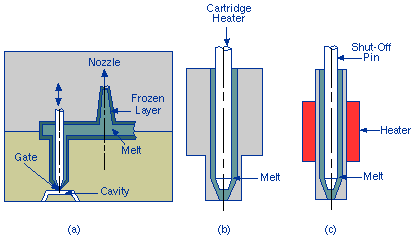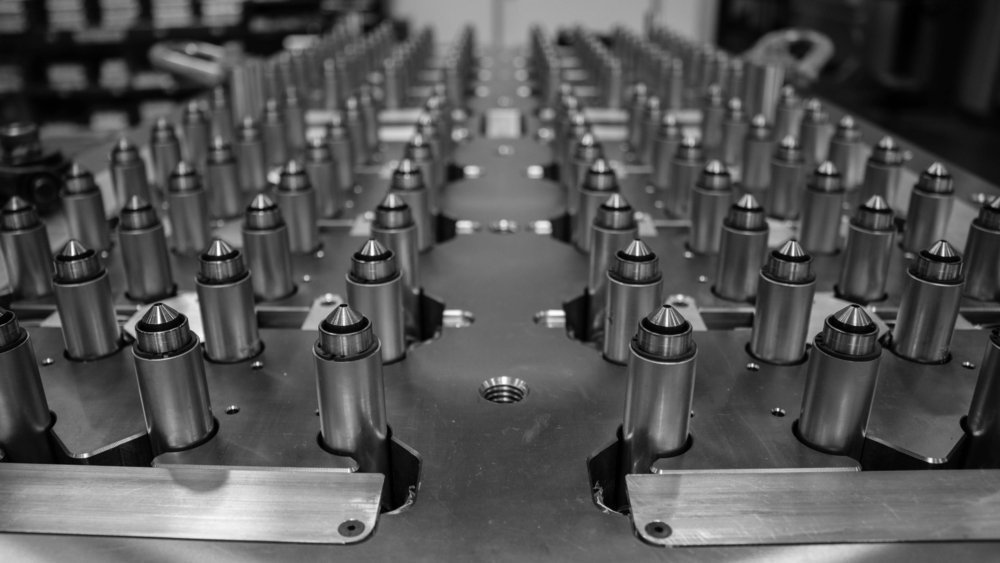Plastics have become one of the most important materials of the modern age. They cut across several industries. Shopping bags, coffee cups, food bowls, and water bottles are examples of plastic products many of us use daily. It is difficult to imagine modern living without plastics. What makes plastics so great? After all, glass and metals are also very useful materials that have been around for longer. They are also still used today in many products. The answer partly lies in properties unique to plastics. Plastics are lightweight and non-brittle, unlike the alternative materials. They also do not rust, unlike metals. These properties amongst many others make plastics the material of choice. The processability of plastics contributes to their popularity.
To convert a metal such as stainless steel into a new product needs lots of heat. The metal must reach a temperature of around 1500oC. Production of glass also happens at a very high temperature. Such a high temperature needs a furnace. Fuel is burnt in one form or order to get heat and this means higher running cost. Furnaces are also not so easy to come by or run. So the processing of glass and metal isn’t cheap. Now let’s look at the processing of plastics. Over the years, manufacturers use several methods to process plastics into products. Thermoplastics in particular go through methods of heating, forming, and cooling. Thermoplastics are much easier to process because most common plastics melt below 300oC. This is at least 5 degrees lower than the melting temperature of glass and metal. Once in their molten soften point plastics can deform under moderate pressure. They also cool to safe temperatures for handling much quicker than glass and metal. Glass could have hardened but still be as hot as 400oC. Handling glass at that temperature without protective gear results in a serious burn.
Injection molding has existed for decades in the production of many plastic parts. Think back to many of those toys you played with as a child. The lego pieces, toy trains, boats, and many more were all likely made using injection molding. Even more advanced products like vehicle parts use injection molding. The allure of injection molding is the ability to produce complex parts in very little time. The process is also reproducible. Injection molding can produce thousands of identical parts within minutes.
The process itself has seen some modifications over the years since its invention. Injection molding went from the plunger-type design to the screw design. This then advanced to sophisticated automated systems. In the plunger-type designs, the plastic melts in a heated barrel. A hydraulic cylinder powers the plunger which rams the plastic melt into the mold. A torpedo is placed between the plunger and the mold forces the melt into the mold. These earlier designs don’t give good mixing. Colors do not mix well and the heating is not uniform. The crew type designs do a better job of achieving uniform melt with even heat distribution. The plunger-type injection molding machines are rarely used these days.
Over the years different manufacturers produced various designs of conventional injection molding. Now there are several variations to the conventional injection molding machine. Although they all operate on the same fundamental working principles, the designs vary. The variations are different attempts at improving the efficiency of the basic functions. Each design presents a different way to heat, mix, melt, inject, cool, and eject the plastics.
Different classifications of injection molding machines exist. One important way to classify them is based on their runner system. Based on this classification the two types are; hot runner and cold runner system. The following sections describe each of these injection molding systems.
Cold Runner Injection Molding

The cold runner system is pretty much the conventional injection molding system. This is because the hot runner system aims to address the limitation of this system. The next section discusses the hot runner. It is important to first have an understanding of the conventional system. So here the description of the cold runner system is an explanation of the typical system.
In this process, the pellets mix and melt by work of the rotating screw in the heated barrel. The melt moves forward as the screw moves backward while rotating. The melt remains in the injection chamber until it reaches the shot size needed. The shot size is set as the volume of melt needed to fill the mold cavities. The shot size makes allowance for shrinkage after cooling. A limit switch stops the backward motion of the screw once the melt reaches the shot size. The screw is then pushed forward by hydraulic pressure at high velocity. This pushes the plastic melt in the injection chamber into the mold. To get to the mold, the melt passes through the sprue, the runners, past the gates into the mold cavity. It is these paths the melt takes from the sprue to the runner that distinguishes cold and hot runners.
Where the process uses many mold cavities, runners are necessary. The molds must fill at the same time to reduce cooling time. The design of the runner aims for an even path length from the sprue to each mold cavity. Once the molds fill, cooling begins. This happens faster using cooling fluid flowing through cooling lines around the mold. In a cold runner system, the entire clamping section cools. This includes the sprue, runner, and molds. After cooling, all plastics in the clamping section get ejected before the next cycle. The plastic in the sprue and runner are not part of the product and are either recycled or scrapped.
You might have noticed in some products where there are some markings. For example at the bottom of some buckets right at the center. These markings are indications of where the product breaks off from the runner parts. Some designers have done this with skill so it is not noticeable. In some cases, it adds to the aesthetics of the product. Cold runner systems might also be more acceptable in the production of larger parts. These usually are in lower volumes and with less number of mold cavities per cycle. The larger size usually means more value per cycle. So the time and plastic scrap from runner and sprue is a lower fraction of the total time and plastic volume.
Ejecting of the hard plastics from the sprue and runner occurs at the same time as that of the product. It might seem irrelevant since the cycle time could be as short as a few seconds. Imagine if it takes about 3 seconds to eject scrap from runners. Take the case of a 10 seconds cycle time. Adding 3 seconds could mean around 1,953 seconds lost within 24 hours of production time. Time in manufacturing translates to profit. So proper design of injection molding systems is important to avoid waste.
Hot Runner System
A grasp of conventional injection molding helps to understand the hot runner system. Although injection molding has been in the industry since 1919. The hot runner system was not used in manufacturing until the 1960s. In the conventional cold runner system, the entire clamping section cools. In the hot runner system cooling occurs only at the mold. This means that at the end of every cycle the product ejects while the melt in the runner remains molten. In the next cycle, the melt in the runner fills the mold. This continues to fill from the rest of the melt from the melt chamber. The calculation of the shot size includes the melt that remains in the sprue and runner after each cycle.

The hot runner injection molding system requires a more sophisticated cooling system. The cooling occurs in such a way that the runner remains hot while the mold cools. This is complex because the melt flows from the runner to the mold hence a contact exists between hot and cold. It is much easier to connect the entire clamping section to cooling lines. It is more difficult to isolate the mold from the runner. This is different from isolating the clamping section from the injection section. This is because the injection section is separate from the clamping section. The flow of melt between the melt chamber and the clamping section is not continuous. After the melt leaves the chamber, the check valve prevents the backflow of melt. This is not the same for the runner and mold. The runner is in direct contact with the mold as it cools. This contact makes heat transfer between the two possible by conduction. Thus making it difficult to cool the mold while the runner remains hot.
This type of injection molding system is acceptable for large volumes and low cost. These are usually small parts. Production time needs to be very short for the process to be profitable. Hot runners are also used where break-off marks affect product aesthetics or function. Examples are plastic accessories and mobile phone cases. Such products need to have smooth seamless surfaces. Customers might reject them based on aesthetics alone.
The image below shows an example of a hot runner of an injection molding system. The image shows the different ways the runner remains hot. Different manufacturers and mold designers will have variations in specific features. For example, the type of cooling fluid used and the cooling line connections. Regardless of these variations, all hot runner systems have the same goal. To keep the runners and sprue hot.

Considerations between the hot runner and cold runner systems
- Hot runner systems are generally more expensive than cold runner systems. This added cost is due to the need for a more sophisticated cooling system.
- Hot runner system installation and startup would take more time and effort. This is due to it having a more complex design
- Recycling of scrap has limits. Certain products allow only a given % of recycling. This is because every time you recycle plastic, the quality reduces. The % of recycled plastics used in a cycle must be very low. There are recommendations for different types of products to keep the desired properties.
- Recycling means more energy and time spent heating and processing the same plastic. This is a waste of production time and resources.
- Hot runner system leads to a smoother product without breakoff signs
- Recent Developments in Hot runner Injection Molding
The industry always demands innovation in how we make products. The hot runner system is an improvement in the conventional injection molding system. Nonetheless, there is more demand for even more advanced hot runner systems. This has led to several variations in hot runner systems to meet different demands. Examples are; stacked hot runner systems, single drop systems, and high cavitation systems. Hot runner systems also exist for micro injection molding. These types of injection molding make very small parts. These are less than a gram and have dimensions less than a millimeter. Hot runner systems are even more important in micro injection molding. This is because the runner volume can be several times the volume of the product. A cold runner system would mean more scrap is being generated than a product. This is not a very efficient process.
Conclusion
The hot runner system allows the product to eject while the runner remains hot. This calls for more complex cooling strategies and systems. Although the conventional cold runner system is simpler. This is at the expense of generating more scrap and less smooth product. The hot runner system eliminates the scrap generated. This reduces the need to recycle and achieves a smoother product. Although hot runner systems are more expensive, they achieve a faster production rate.
Reference Links

